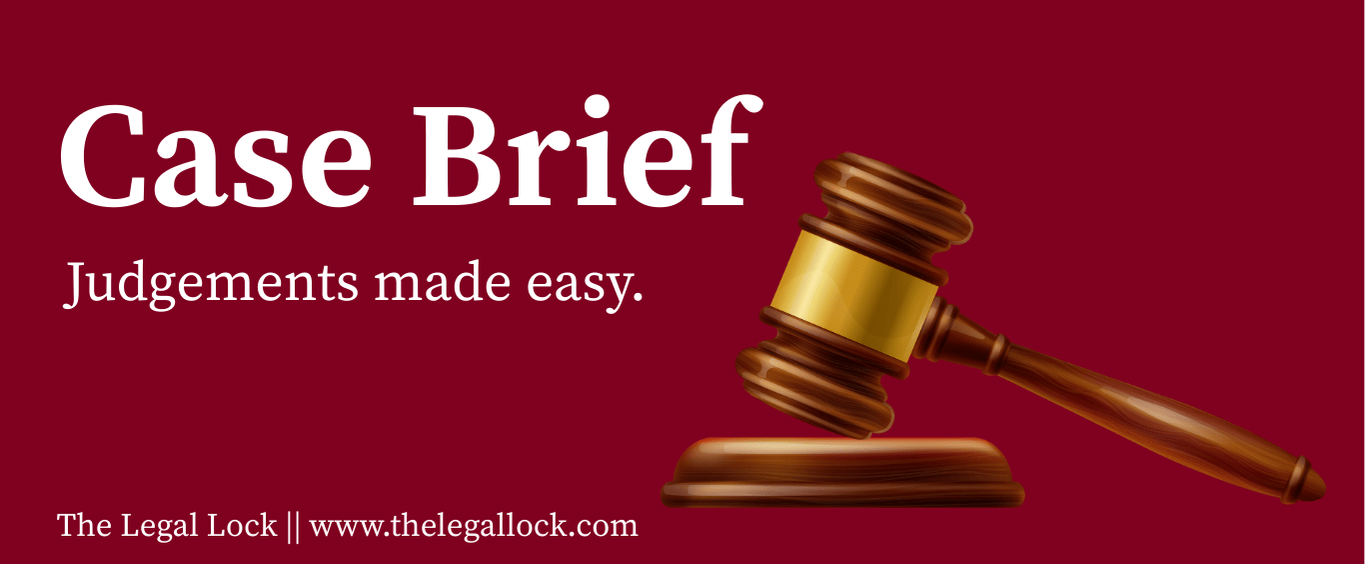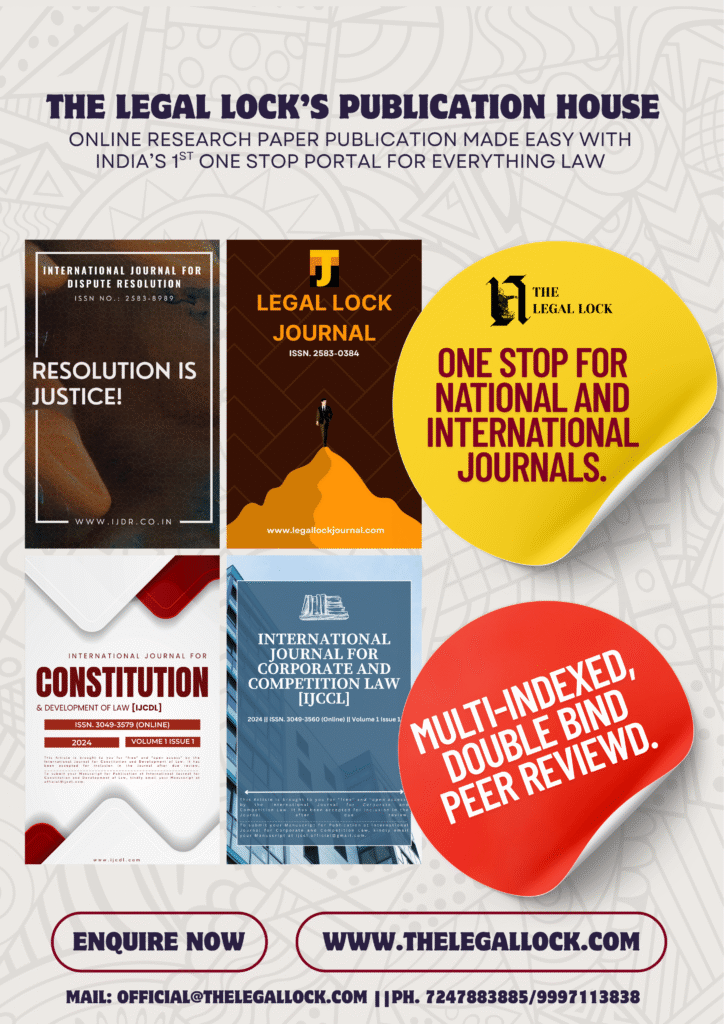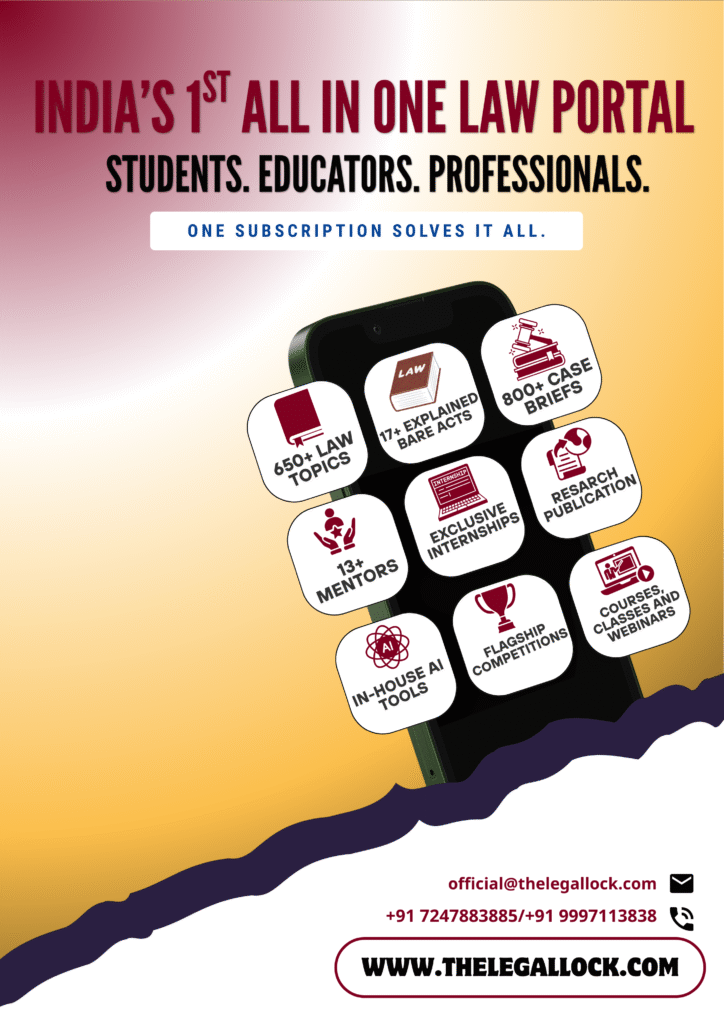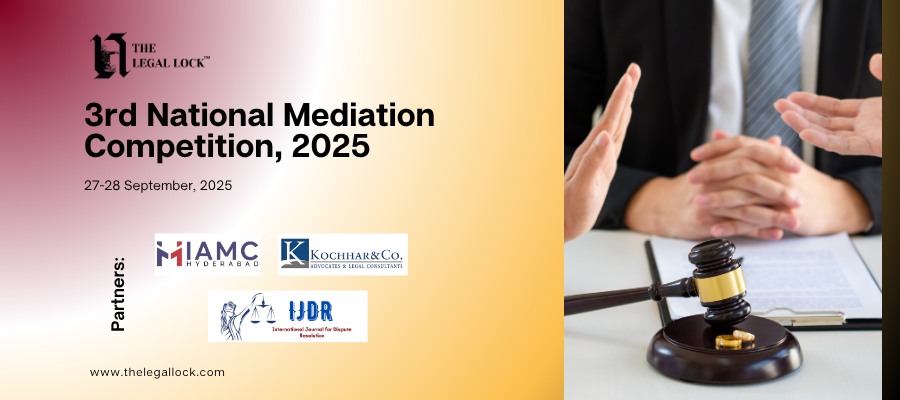Case Brief: Swapnil Tripathi vs. Supreme Court of India

| Case Name | Swapnil Tripathi v. Supreme Court of India |
| Citation | (2018) 10 SCC 639: 2018 SCC online SC 1667: AIR 2018 SC 4806: (2018) 253 DLT |
| Court | Supreme Court of India |
| Bench | Dipak Misra, A.M. Khanwilkar and D.Y. Chandrachud |
| Petitioner | Swapnil Tripathi |
| Respondents | Supreme Court of India |
| Decided on | September 26, 2018 |
Introduction
With the upcoming recent era of technology, there was need felt to revamp the Indian judiciary to bring it in mainstream in terms of technology as well. Indian judiciary is claimed to be open and accessible to all, but as this case has shown in reality it is not the case. The case is filed by a law student who has struggled to observe the Court room proceedings, a much required experience for the young and meritorious law students whose learning experience is bereft of any practical exposure due to the Court room being packed with the senior advocates and due to unavailability of the judgment these students struggle to have effective practical experience. The Supreme Court of India ruled that proceedings of cases before the Supreme Court of Constitutional and national importance should be broadcast to the public. Representatives of public interest presented a case in 2018, arguing that broadcasting court proceedings to the public aligns with the principles of open justice and open courts.
The court, acknowledging that the right to observe live broadcasts of Supreme Court proceedings stems from the constitutional right to access justice, emphasized that this right is not without limitations. Consequently, the court introduced a set of Model Guidelines to govern the discretion of courts in determining when to allow such broadcasts. It was also aimed towards having transparency in the judicial process.
Brief facts
Swapnil Tripathi, a fourth-year law student from National Law University, Jodhpur, filed a Public Interest Litigation (PIL) in the Supreme Court of India under Article 32 of the Constitution. Tripathi’s plea emphasized the inaccessibility of Supreme Court proceedings, particularly Constitutional Bench matters, for law students, hindering their practical exposure. He argued that live streaming of court proceedings, especially those of constitutional importance, would address this issue and enhance the learning experience for students. Tripathi’s PIL was later combined with similar petitions filed by other individuals, including Indira Jaising, Mathews J. Nedumpara, and the Centre for Accountability and Systematic Change.
The collective plea sought a declaration that Supreme Court case proceedings of constitutional importance, impacting the public or a large number of people, should be live-streamed for easy public access. The petitioners drew support from the precedent set in the case of Naresh Shridhar Mirjkar v. State of Maharashtra (1966), where the court recognized the right of journalists to report on court proceedings as part of their fundamental rights.
Tripathi’s initial motivation for the PIL stemmed from being denied entry to the Supreme Court during his internship due to a notice restricting interns on miscellaneous days. These days, typically Mondays and Fridays, are reserved for hearing new matters. His petition aimed to challenge the notice, asserting a violation of the interns’ “Right to Learning.” In addition to striking down the notice, the petition proposed the creation of a live-streaming room for interns to observe proceedings in real time.
Issues before the Court
- Whether there can be live streaming of the Court proceedings?
- If it can be permitted, what all steps have to be taken?
- Does not getting access to proceedings of the Court to the citizens who wish to see the Court proceedings violate their fundamental right?
- Whether an open Court system to be adopted and introduced in India and if so, under what conditions?
Arguments from the Petitioner
The learned counsel strongly advocated for the live streaming of cases of constitutional and national significance. Emphasizing the need for appropriate infrastructure to support such live streaming, they drew upon the precedent set in the case of Naresh Shridhar Mirajkar v. State of Maharashtra. In this case, it was asserted that an open trial is a norm and deemed a fundamental right under Article 19.
Furthermore, the counsel argued that the restriction on interns’ entry into courts not only infringes upon their right to learn but also violates Article 14 of the Indian Constitution. They pointed out that on miscellaneous days, the courts experience high congestion, making it challenging for interns to gain practical exposure.
Highlighting the fundamental right to access justice under Article 21 of the Constitution, the counsel acknowledged the practical difficulties that individuals face in exercising this right. Factors such as time, resources, and the inability to travel daily hinder interested parties from attending court proceedings regularly.
Moreover, the counsel contended that live streaming would serve the broader public by educating them about issues presented before the court, offering a comprehensive overview. To reinforce their argument, they referenced the practices in other jurisdictions, including Australia, Brazil, Canada, England, and other countries, where case broadcasts are conducted and subsequently uploaded on official websites for public reference.
Arguments from the Respondent
The respondent’s counsel expressed agreement with the proposal for live streaming of cases but advocated for a systematic approach. He argued in favour of categorizing cases eligible for broadcasting and emphasized the necessity of comprehensive guidelines governing the live streaming process.
Addressing the mode of implementation, the counsel suggested a progressive and structured approach to internet streaming. This approach, he explained, should be carefully designed to uphold the dignity of the court, advocating for a phased rollout of the entire project.
The counsel put forth specific recommendations, including the requirement of advance court permission for live streaming. Additionally, he proposed obtaining consent from the involved parties, with the court making decisions in cases of disagreement—an aspect he described as “non-justiciable and non-appealable.”
Furthermore, he contended that court-granted permission for live streaming could be subject to revocation at any point. To safeguard against unintended disclosures, he suggested allowing a ten-minute delay to facilitate the editing of sensitive information.
In conclusion, the counsel emphasized the need for a structured module for the live streaming of cases, outlining a comprehensive and well-regulated framework.
Decision
The honourable court granted the writ petitions and affirmed that Article 21 encompasses the right to access justice and educate the public on constitutionally and nationally important and significant cases. The court highlighted the duty of the State to promote awareness and acknowledged that Article 19(1)(a) includes the “right to know and receive information,” allowing the public to witness court proceedings. Citing constitutional provisions like Article 145(4), along with legal references such as Naresh Shridhar Mirajkar v. State of Maharashtra, Section 327 of the CrPC, 1973, and Section 153-B of the CPC, 1908, the court emphasized the concept of open justice. Recognizing the potential benefits of technology, the Court emphasized the need for a comprehensive framework and assigned the Attorney General the task of compiling suggestions.
In considering the delicate balance between access to justice and privacy, the Court cited the Mirajkar case, affirming the norm of open trials. Stressing the significance of constitutional rights, notably Article 21, and the State’s duty to disseminate legal awareness, the Court highlighted the importance of a balanced regulatory framework before the implementation of live streaming.
Referring to international perspectives on live streaming, the court discussed cases like Van Breda v. Media Ltd. From South Africa, where the Supreme Court allowed the broadcast of criminal trial proceedings with restrictions based on demonstrable prejudice. The court also mentioned Estes v. Texas from the United States, which addressed the question of whether courtroom broadcasting was inherently prejudicial to a fair trial.
In accepting recommendations from the learned Attorney General and the respondent, the court endorsed the principle that justice must be administered in public. It specified cases where broadcasting should not be permitted, such as matrimonial matters, cases involving juveniles, national security issues, protection of witnesses, matters related to sexual assault or rape, and those evoking community sentiments. The court outlined conditions for broadcasting, including written permission, penalties for unauthorized use, and guidelines for camera angles during proceedings.
Conclusively, the Court affirmed that live streaming upholds constitutional rights and sought a balance between justice administration, open justice, dignity, and privacy. In a concurring judgment, the Court emphasized the significance of open justice, recognized the role of technology in enhancing access and transparency, and concluded with model guidelines for live streaming proceedings. In granting the writ petitions, the Court affirmed that Article 21 encompasses the right to access justice and educate the public on constitutional and nationally significant cases, highlighting the duty of the State to promote awareness. The Court acknowledged Article 19(1)(a) as including the “right to know and receive information,” allowing public witnessing of court proceedings. Citing constitutional provisions and legal references, the court stressed the concept of open justice.
Considering technological advancements, the court noted its previous directives on the use of technology, including videoconferencing in cases like Krishna Veni Nagam v. Harish Nagam. It highlighted the integration of information and communication technology through the e-Courts Integrated Mission Mode Project and various platforms for service delivery.
Conclusively, the court endorsed live streaming of cases as an extension of open courts, specifying that it would be conducted by a person or agency appointed by the Chief Justice of India. The proceedings would be hosted on the Supreme Court’s website, facilitated by the National Informatics Centre and the Ministry of Electronics and Information Technology. The judgment permitted the live streaming of specific cases, outlining a model for implementation.
Analysis
It is time to conclude this comprehensive article, addressing various aspects of live streaming. Despite widespread advocacy for the adoption of live streaming, the Indian judicial system seems to be faltering in translating words into action. The 2018 landmark judgment in the case of Swapnil Tripathi presented a significant opportunity, yet the desired progress appears lacking.
Consistency in practice over time establishes a precedent, and this is reflected in the cautious approach of High Courts across the country. The reluctance to embrace the idea of live streaming is evident, and there seems to be a hesitancy among Chief Justices, who play a pivotal role in making decisions on crucial policy matters. The Bar, as a collective, may not take the lead until the Chief Justice of a High Court demonstrates a willingness for public viewership of court proceedings.
The key lies in Chief Justices becoming pioneers, setting an example for all the judges in their respective High Courts. The proactive steps taken by Chief Justices in states like Gujarat and Karnataka could serve as inspirations for their counterparts in other High Courts. Emulating such initiatives could potentially pave the way for wider acceptance and implementation of live streaming practices. Three years after this judgement, there was not much action taking place. In June 2021, the E-committee of the Supreme Court released Draft rules on live streaming at High Courts. There has been, though, concern regarding livestreaming and broadcasting, but this advancement in the legal field is surely a good step towards awareness among the public.
References
Naresh Shridhar Mirajkar and Ors. v. State of Maharashtra and Anr. (1966) SCR(3) 744 from https://india.lawi.asia/naresh-shridhar-mirajkar-and-ors-v-state-of-maharashtra-and-anr/ ;
Scott v. Scott from https://www.casemine.com/judgement/uk/5a938b3d60d03e5f6b82ba1f
Estes v. Texas, 1965 SCC Online US from https://www.nytimes.com/2013/05/15/us/billie-sol-estes-texas-con-man-dies-at-88.html;







